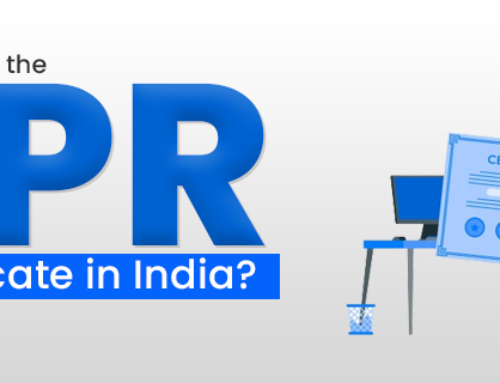Transfer pricing standards apply to foreign transactions as well as some domestic transactions between related businesses (AE). The rules and methods for pricing transactions within and between enterprises under common ownership or control are referred to as transfer pricing in taxation and accounting.
Profits resulting from such transactions must be measured using the arm’s length price concept, which is the amount payable if the trading firms were unrelated or unregulated, according to the Indian Income-tax Act, 1961.
Overview: Transfer Pricing In India
Contents
- Overview: Transfer Pricing In India
- Risks and benefits of Transfer Pricing
- Benefits of Transfer Pricing:
- Risks of Transfer Pricing:
- Arm’s Length Methods in transfer pricing
- Arm’s Length Range
- Major Taxation Issues in transfer pricing
- Diverted profits tax and other non-complementary measures
- People Getting Taxed Twice
- Significant impact on other taxes
- How Covid-19 Has Impacted It All Transfer Pricing
- Conclusion
A large number of global trades constitute transactions between related enterprises within groups of multinational enterprises (MNEs). Transfer pricing is a term related to the pricing of such cross-border, intra-group transactions in goods, intangibles, or services which include financial services. The rules for transfer pricing were announced in India in April 2001 followed by an amendment to the Income-tax Act 1961 (ITA), which included intra-group cross-border transactions, and, since April 2013, the provisions have been extended to certain domestic transactions between related enterprises for a limited time until 2017.
The rules mainly align with the Organisation for Economic Co-operation and Development Guidelines (the OECD Guidelines) on transfer pricing, and definitions of international transactions, documentation perquisites, and related enterprises are broad and expansive.
The law mainly provides the public with methods to calculate the arm’s-length price, extensive annual requirements of transfer pricing perquisites, and penalties for non-compliance with the law.
Although the law includes both income and capital transactions and they have mainly the same rules, it only covers capital transactions that have a situation of income, such as business reorganizations and use of intangibles, that is embedded in the charging rules of the substantive law.
Section 92B of the ITA recognizes the word ‘international transaction’ as a transaction between two or more relevant enterprises involving:
- The lease, sale, or purchase of tangible or intangible property
- The rules and regulations of services
- Cost-sharing arrangements
- Borrowing or lending of funds
- Any other monetary interaction that involves gains, income, losses, or assets of such enterprises.
A relationship between related enterprises might include:
- The indirect or direct acquisition of at least 26% voting interests
- Management of the board of directors
- Regular control
- An important dependence on intangibles, raw materials or consumables
- Supplier borrowing or guaranteeing a loan for the substantial percentage of total assets from one of the related enterprises
- Any other relationship that might benefit both the enterprises.
The definition that is mentioned above also covers deemed international transactions in third-party scenarios, specifically when the terms of the contract are determinable.
The 2001 transfer pricing rules and regulations weren’t mostly reformed until 2012 when substantial changes were introduced. Particularly, the definition of the international transaction was expanded to cover a lot of other transactions, like the sale or purchase of tangible and intangible assets, and capital financing.
The definition of ‘intangible property’ was provided a significant scope at a time when the debate on intangibles at the global level was obtaining momentum.
A lot of reforms were introduced from 2013 to 2015, and were followed up in 2017 and 2020 with the following significant changes:
- Introduction of SHR (safe harbor rules);
- An option to use a ‘sixth methodology’;
- Power to create a five-year unilateral or bilateral advance pricing agreement (APA), which significantly covered rollback of up to four years;
- Use of more than one years of data for benchmarking reasons;
- An interquartile range between 35 and 65 percentile determined by the Indian version;
- Thin capitalisation; and
- Secondary adjustment.
A significant improvement was done through the Finance Act 2020 with regard to profit attribution for permanent establishments (PE) and extension of safe harbor rules and advance price agreement to PE profit attribution.
Even though the arm’s-length principle is applicable to transactions only if income charging provisions are applicable, the argument related to its imposition to the issuance of shares or a capital transaction is now settled.
Though the disclosure rules have been changed to disclose such capital transactions. Dividends are not related to arm’s-length pricing principles because they are considered as the attribution of profits and exempt from tax at the shareholder level.
Section 188 of the Companies Act 2013 describes the consent of the board of directors for certain related-party (both domestic and international) transactions. This is not applicable to transactions under the regular course of business.
In November 2019, the capital markets regulator, known as the Securities and Exchange Board of India (SEBI), established a working group to review the policy pertaining to related-party transactions (RPTs) for listing individuals. Hence, in January 2020, SEBI announced policy proposals with regards to RPTs to protect the investor’s rights and for the ease of the business process.
There are no direct conclusions of not transacting at arm’s length (such as the dividend conclusions), unlike in other jurisdictions. Though the Income Tax Act was amended to provide for secondary adjustments.
Risks and benefits of Transfer Pricing
However, some of the risks and benefits associated with the transfer price are as follows:
Benefits of Transfer Pricing:
- Transfer’s help to reduce labor costs by exporting goods to high tax countries at very low prices so that the bond value associated with this purchase is low.
- Reducing the income tax in high-income countries by over-taxing goods transferred to units in those countries where the tax rate decreases relatively thus giving them a higher profit margin.
Risks of Transfer Pricing:
- There may be disagreements between the executives of the organizational divisions as to what policies should be in relation to transfer policies.
- There are many additional costs associated with the time required and staff required to make transfer rates and assist in building an accounting system.
- It is difficult to estimate the fair value of the intangible pricing policy such as services, as the transfer price is not effective as these departments do not provide measurable benefits.
- The issue of transfer of prices may result in misconduct by the management of the entities. Another matter of concern is the process of transferring prices is very complex and time-consuming for many people in many countries.
- Buyer and seller perform different functions of each other that create different types of risks. For example, a retailer may or may not provide a product warranty. But the price the consumer will pay will be affected by the difference. The risks involved in prices are as follows:
- Financial risks
- Risk of collection
- Market and business risks
- Risk of product expiration
- Credit risk
Arm’s Length Methods in transfer pricing
In accordance with the OECD guidelines, the methods available are direct and indirect. The direct methods can be compared to the uncontrolled price method, the resale price method, and the cost-plus method.
All of the above-mentioned direct methods are used to compare the prices or the normal gross profit margins or the normal gross profit mark-ups respectively.
The indirect methods are the profit split method that splits the total net profit and the transactional net margin method that is compared with the net profit margin or the operating profit relating to a relevant base such as cost, sales, or assets. In India, in most cases, the transactional net margin method is imposed followed by the resale price method and cost-plus method. The profit split method is generally applicable in very few cases. There is also a residuary method that may be defined by the CBDT.
Arm’s Length Range
Just because transfer pricing is not an exact business, usually, the application of the most appropriate method creates a range of figures all of which are equally reliable.
In India, the former arithmetical average mode was partially modified by the arm’s length range which is only applied when the resale pricing approach or cost-plus method or the net margin technique for transactions is applicable. The basis of application is on the dataset that consists of six or more entries and the arm’s length range starting from the 35th percentile of the dataset and ending on 65th percentile. The range concept is not applied where methods other than these are considered to be applicable.
Major Taxation Issues in transfer pricing
Diverted profits tax and other non-complementary measures
The Indian government amended the ITA in 2012 to oppose offshore indirect transfers of shares with underlying assets in India. Section 9(1)(i) states that if any individual registered outside India derives its value from an individual situated in India in the form of shares or interest, then the individual from the outside is considered to be situated in India and liable for capital gains tax. Hence, transfers of interest in the foreign entity would attract capital gains, subject to exemptions and valuation regulations.
In accordance with the OECD’s BEPS Action Plan on taxing e-commerce transactions, India in 2016 announced an ‘equalization levy’ to provide for a charge of 6% in the form of tax from amounts paid to a non-resident not having any permanent establishment in India, for certain services, which include business-to-business services such as online advertising and regulations for digital advertising space.
In 2018, India announced the concept of the ‘significant economic presence test to tax non-residents on profits made through non-PE traditional laws under relevant double-tax treaties, although its application has been deferred followed by the treaty amendments which concludes from the OECD BEPS multilateral process. This regulation was earlier proposed to be effective from the tax year 2020–2021; though, in February 2020 it was deferred to 2021–2022.
In April 2019, India issued a public consultation document on gaining profit to PEs, telling everyone about the concept of the ‘fractional formulary approach’ to attributing profits to PEs. OECD guidelines focus on the supply-side factors for gaining profits and ignore factors associated with markets and demand, which could have major adverse consequences for developing economies like India.
People Getting Taxed Twice
CBDT has made this clear that MAP and bilateral APA applications can be applied to any taxpayer working in India (regardless of residence) with which India has a double-taxation avoidance agreement even though the agreement does not have regulations for the corresponding adjustment in matters of transfer pricing.
Significant impact on other taxes
Indirect tax conclusions related to transfer pricing adjustments are independent of the ITA and are regulated by different laws.
Under the GST (Goods and Service Tax) laws, which are applicable to all supplies of goods and services in India (including imports), the transaction value between the parties is the most important basis of valuation of supplies for the reason of determining the GST liability. Though, in the situation of a related-party transaction, the transaction value is not accepted. Hence, a related-party transaction must be benchmarked based on the rules that have been stated, among which is the open market value (OMV) of relevant goods or services supplied to a non-related party. In such a case where OMV is unavailable, then the taxable value is to be determined on the basis of the value of similar supplies, the cost construction method, or the resale price of goods to different individuals, in that order.
Indian custom rules, which provide for liability of import and export duties on goods imported into and exported from India, are based on the World Trade Organization’s Customs Valuation Agreement in so far as ascertaining taxable value for customs duties purposes is concerned. On the same basis, in case of any related-party transaction, the announced import price is not accepted unless it is stated that the relationship between the buyer and the seller may not hold ‘influenced the price’ of the imported goods.
If the parties fail to state so, the transaction value is rejected, and the valuation of the imports is referred, administratively, to the Special Valuation Branch (SVB) of Customs.
The SVB sequentially levies valuation rules described under Customs Valuation Rules to ascertain the arm’s-length transaction value. According to the Customs Valuation Rules, this value is ascertained on the basis of the import value of identical goods or similar goods (with necessary adjustments), the deductive value method or calculated value method, and after that, the residual method.
How Covid-19 Has Impacted It All Transfer Pricing
Businesses will have to face disturbance due to covid-19 and reassume transfer pricing policies. Agreements between different companies which impact pricing policies will need to be amended. To limit the risk, distributors, contract manufacturers, and contract R&D service providers, taxpayers will evaluate the profit margin impact. There is no administrative guidance available related to that, but taxpayers can negotiate the terms of their APA again.
All of these laws have been made recently, though amendments might be made to them sooner or later so keep your information up-to-date.
Conclusion
Multinational transfer pricing has tax benefits, but regulatory authorities frown on using transfer pricing for tax avoidance. Companies will book income from goods and services in a foreign country with a lower tax rate when they use transfer pricing. In certain cases, moving goods and services from one country to another as part of a broader interconnected business transaction will help a company escape tariffs on goods and services sold internationally. The Organization for Economic Cooperation and Development (OECD) regulates international tax laws, and auditing firms in each international location conduct financial statement audits in accordance.
Take the expert advice of LegalRaasta, one of the top consultants over the country for country, registration of your all types of registration like Company registration, Food Business registration, ITR filling, etc.
Call +91-8750008585 to get started!
You can mail us at [email protected]






